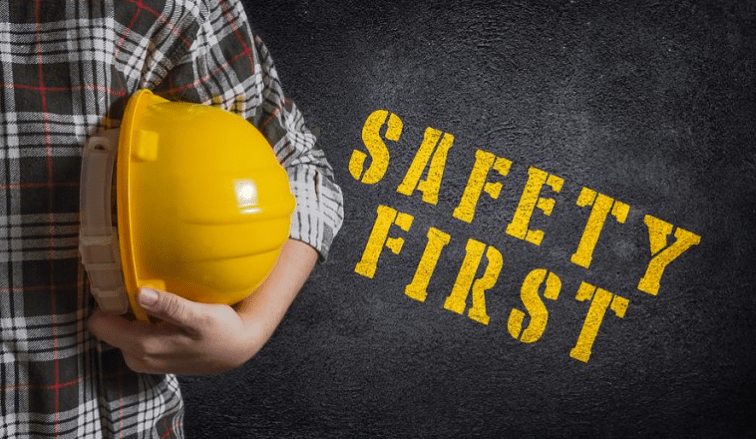- By Bella Blog
- Roofing
- 0 Comment
Discover essential safety practices for both homeowners and contractors when it comes to roofing projects.
Understanding Roofing Hazards
Roofing can be a hazardous job, with various risks involved. It’s important to understand these hazards to ensure the safety of everyone involved. Some common roofing hazards include working at heights, potential falls, electrical hazards, and the risk of injury from tools and materials.
Working at heights is one of the most significant hazards in roofing. It is essential to have proper fall protection measures in place, such as using safety harnesses and guardrails. Additionally, ensuring a stable and secure footing on the roof is crucial to prevent accidents.
Electrical hazards also pose a risk in roofing projects. It is important to identify and avoid power lines and electrical equipment to prevent electrocution. Using non-conductive tools and equipment is advisable when working near electrical sources.
Lastly, the use of sharp tools and heavy materials can lead to injuries if not handled properly. It is essential to follow safe work practices when using tools and to ensure that materials are handled with caution and proper equipment, such as gloves and goggles, is used.
Importance of Proper Safety Equipment
Using proper safety equipment is crucial to minimize the risk of accidents and injuries in roofing projects. The following are some essential safety equipment that should be used:
1. Personal Protective Equipment (PPE): This includes items such as hard hats, safety glasses, gloves, and protective footwear. PPE helps protect against head injuries, eye injuries, hand injuries, and slips or falls.
2. Fall Protection Equipment: This includes safety harnesses, lifelines, and anchor points. Fall protection equipment is essential when working at heights to prevent falls and serious injuries.
3. Ladders: Choosing the right ladder for the job and using it correctly is vital for safety. Ladders should be in good condition, properly secured, and used on a stable surface.
4. Tools and Equipment: Using the right tools and equipment for the job can help prevent accidents and injuries. It is important to use tools that are in good condition and to follow proper handling procedures.
By using proper safety equipment, homeowners and contractors can significantly reduce the risk of accidents and create a safer working environment.
Best Practices for Homeowners
When it comes to roofing projects, homeowners should prioritize safety to protect themselves and the contractors working on their property. Here are some best practices for homeowners:
1. Hiring Licensed and Insured Contractors: Ensure that the roofing contractor you hire is licensed and insured. This provides protection for both parties in case of accidents or property damage.
2. Clearing the Work Area: Before the roofing project begins, remove any obstacles or debris from the work area. This will help create a safer environment for the contractors and minimize the risk of accidents.
3. Communicating with the Contractor: Maintain open communication with the contractor throughout the project. Discuss any concerns or questions you may have and ensure that both parties are on the same page regarding safety precautions.
4. Respecting Safety Boundaries: It is important for homeowners to respect safety boundaries set by the contractor. These boundaries are established to protect everyone involved in the project.
By following these best practices, homeowners can contribute to a safer working environment and ensure the successful completion of their roofing project.
Best Practices for Contractors
Roofing contractors play a vital role in ensuring safety during roofing projects. Here are some best practices for contractors:
1. Conducting Safety Training: Provide comprehensive safety training to all employees and subcontractors. This should include proper use of safety equipment, fall protection measures, and emergency procedures.
2. Performing Regular Equipment Inspections: Regularly inspect all tools, equipment, and safety gear to ensure they are in good working condition. Replace or repair any damaged or faulty equipment.
3. Implementing Fall Protection Measures: Establish and enforce fall protection measures, such as using safety harnesses, guardrails, and safety nets. Ensure that all employees are trained on the proper use of fall protection equipment.
4. Creating a Safety Culture: Foster a culture of safety within the company by promoting open communication, reporting near misses, and recognizing employees who prioritize safety.
By following these best practices, contractors can create a safer work environment, protect their employees, and deliver high-quality roofing services.
Collaborative Safety Measures
Safety is a collective responsibility that requires collaboration between homeowners and contractors. By working together, they can ensure a safer roofing project. Here are some collaborative safety measures:
1. Pre-project Safety Assessment: Before starting the roofing project, conduct a thorough safety assessment of the property. Identify potential hazards and develop strategies to mitigate them.
2. Regular Communication: Maintain regular communication between the homeowner and contractor throughout the project. This allows for the exchange of safety-related information and helps address any concerns promptly.
3. Clear Communication of Expectations: Clearly communicate safety expectations and requirements to all parties involved. This includes discussing safety protocols, access restrictions, and emergency procedures.
4. Monitoring and Supervision: Both homeowners and contractors should monitor the progress of the project and ensure that safety measures are being followed. Regular supervision helps identify any deviations from the safety plan and allows for timely corrective actions.
By implementing these collaborative safety measures, homeowners and contractors can work together to create a safe and successful roofing project.
Bella Blog
Welcome to Bella Construction & Developement Inc., where excellence meets affordability in the realm of construction services.

